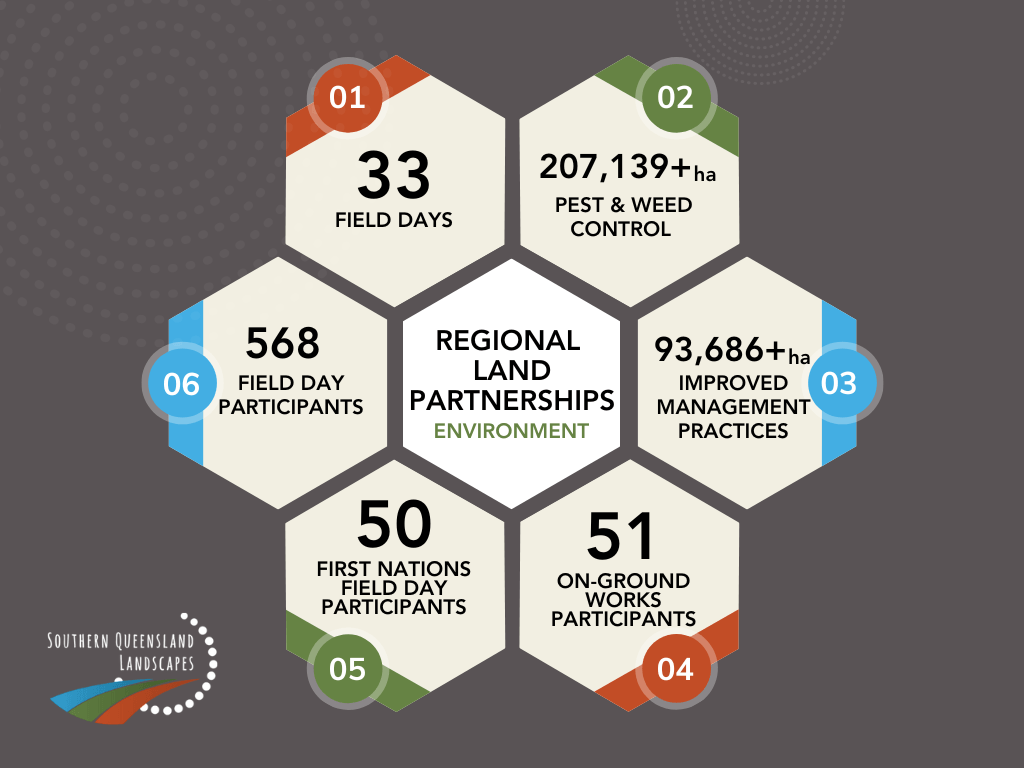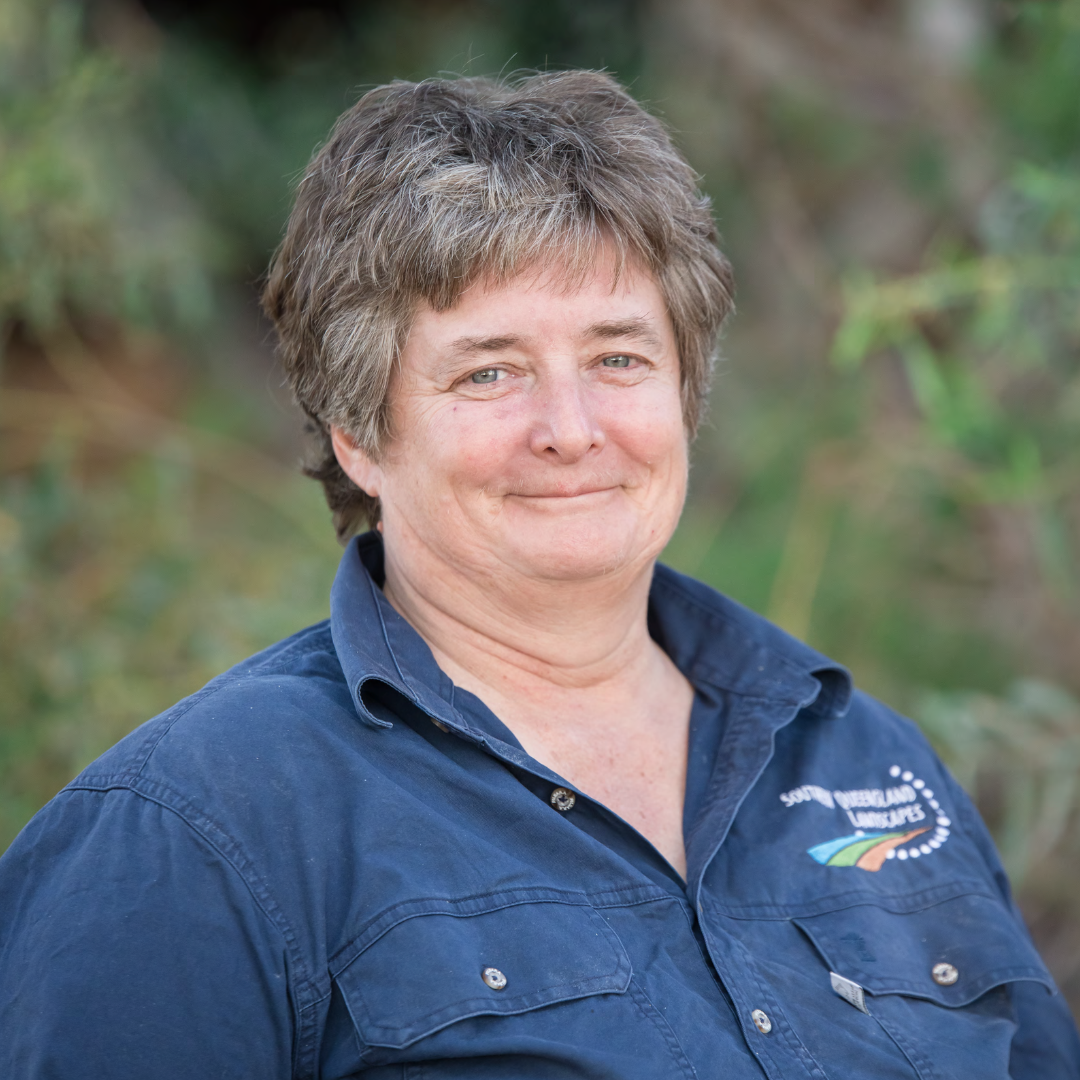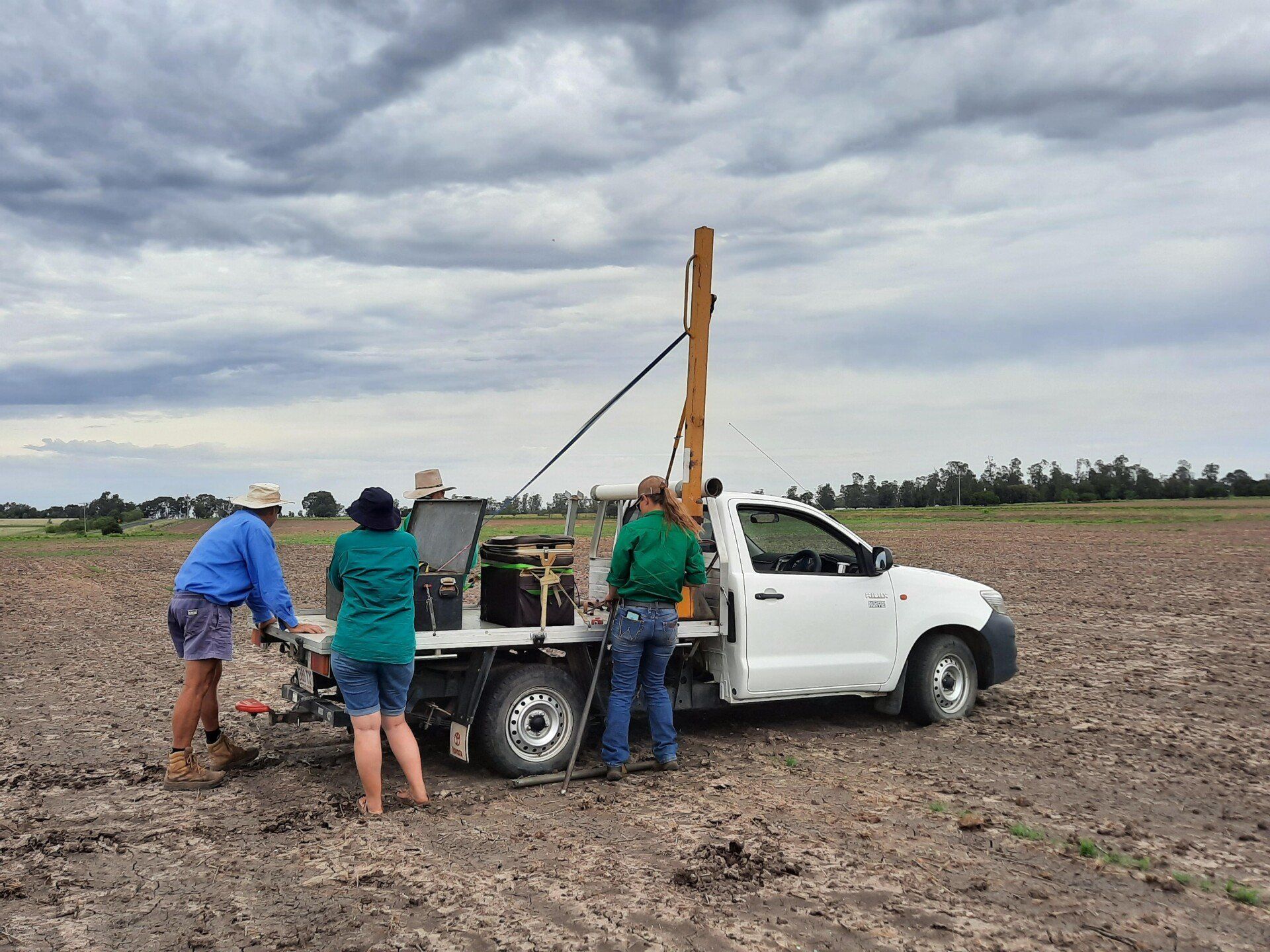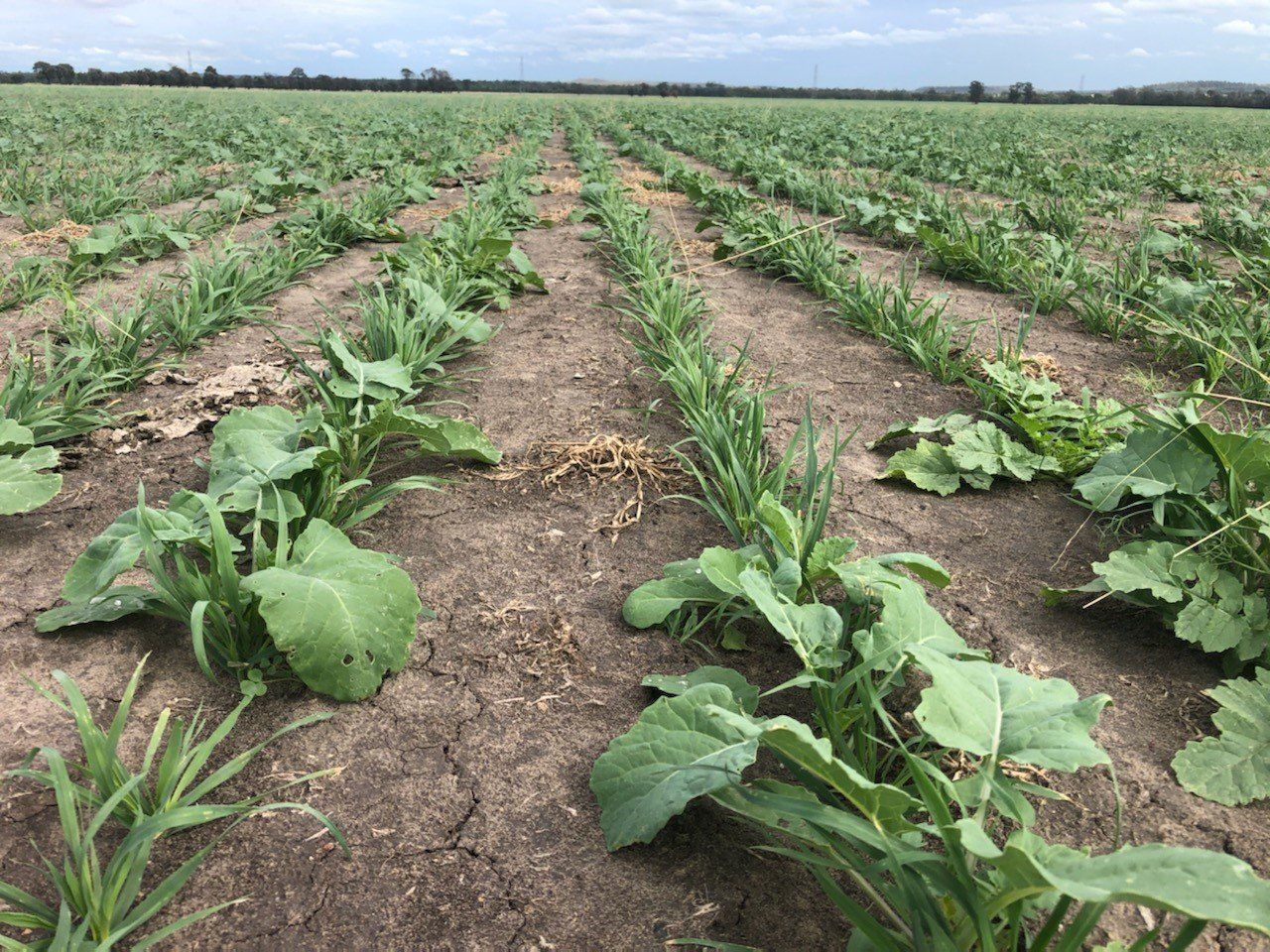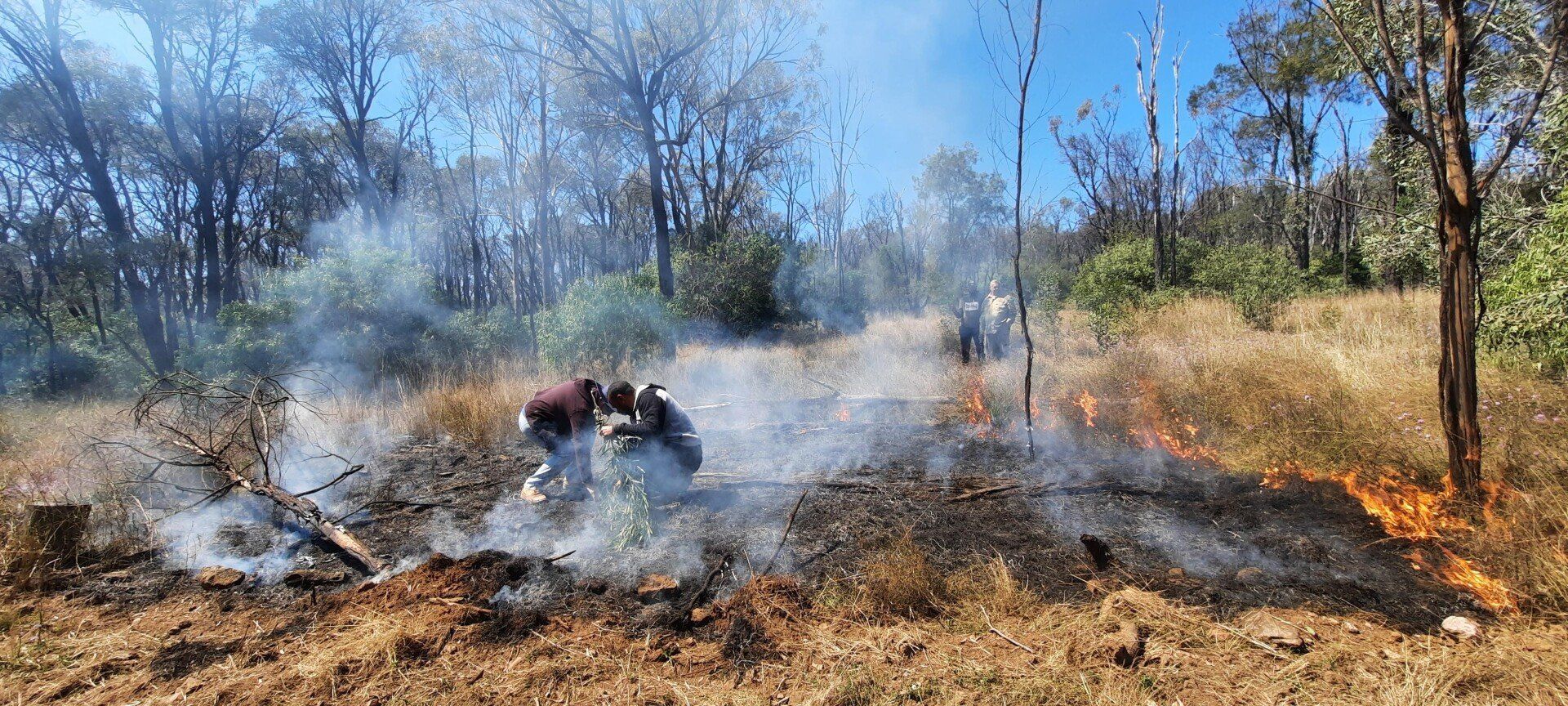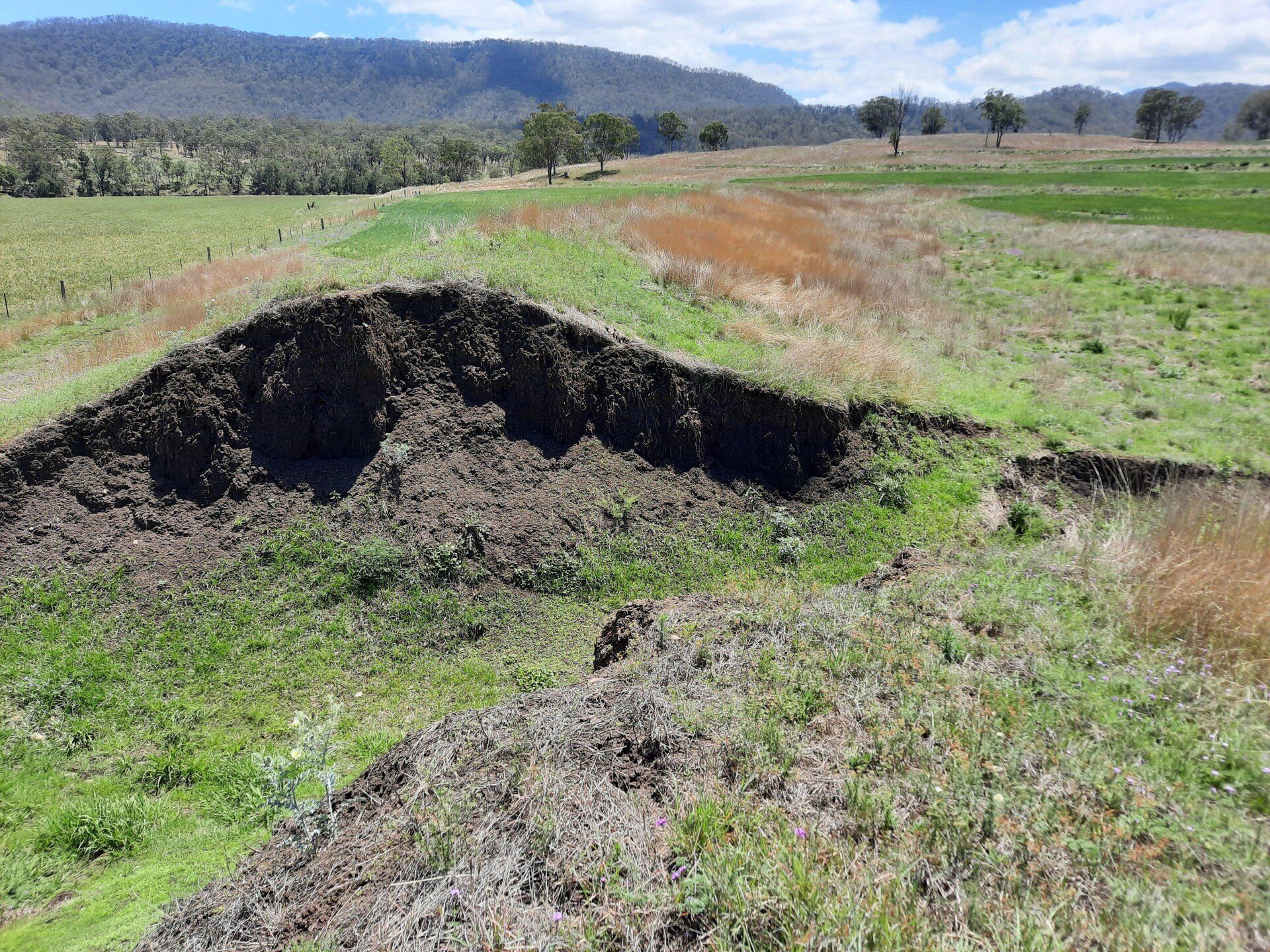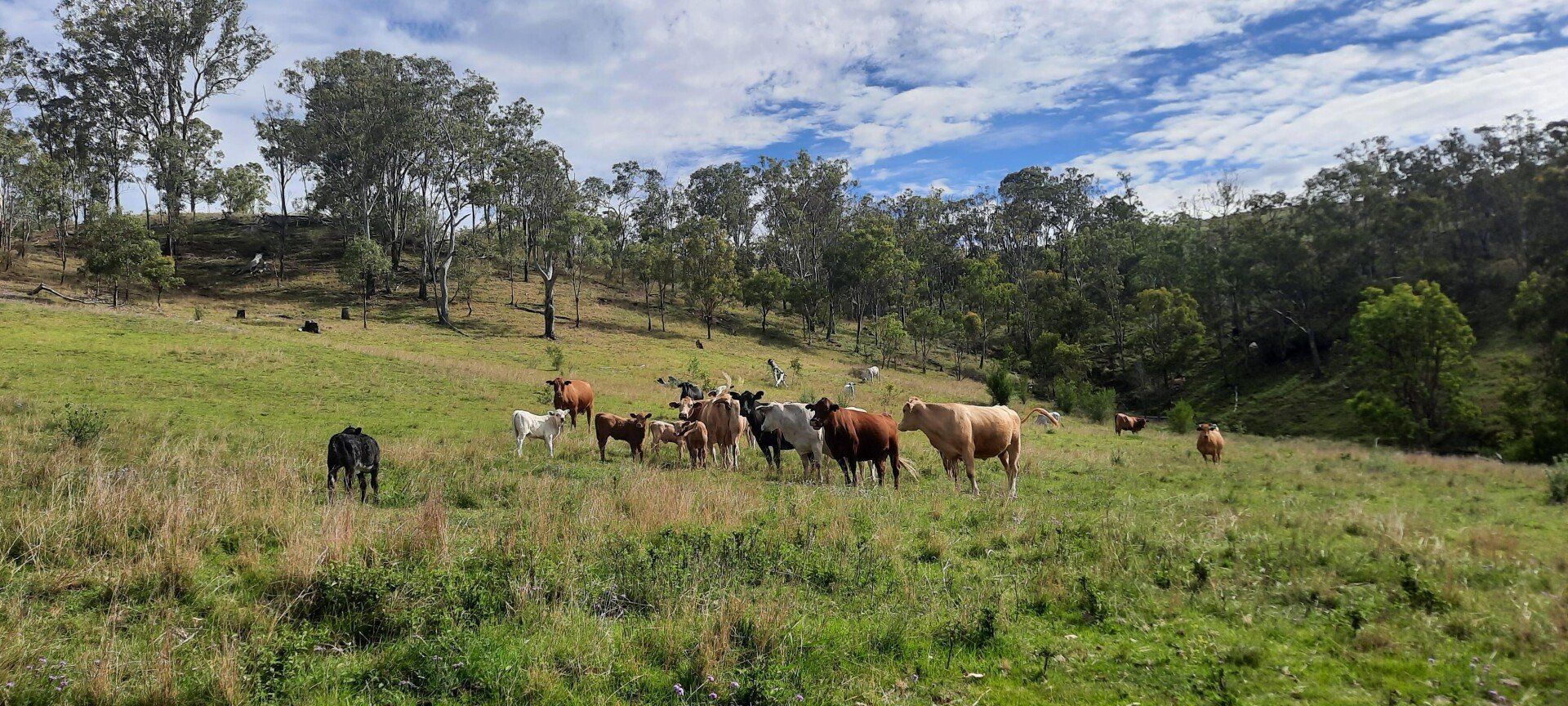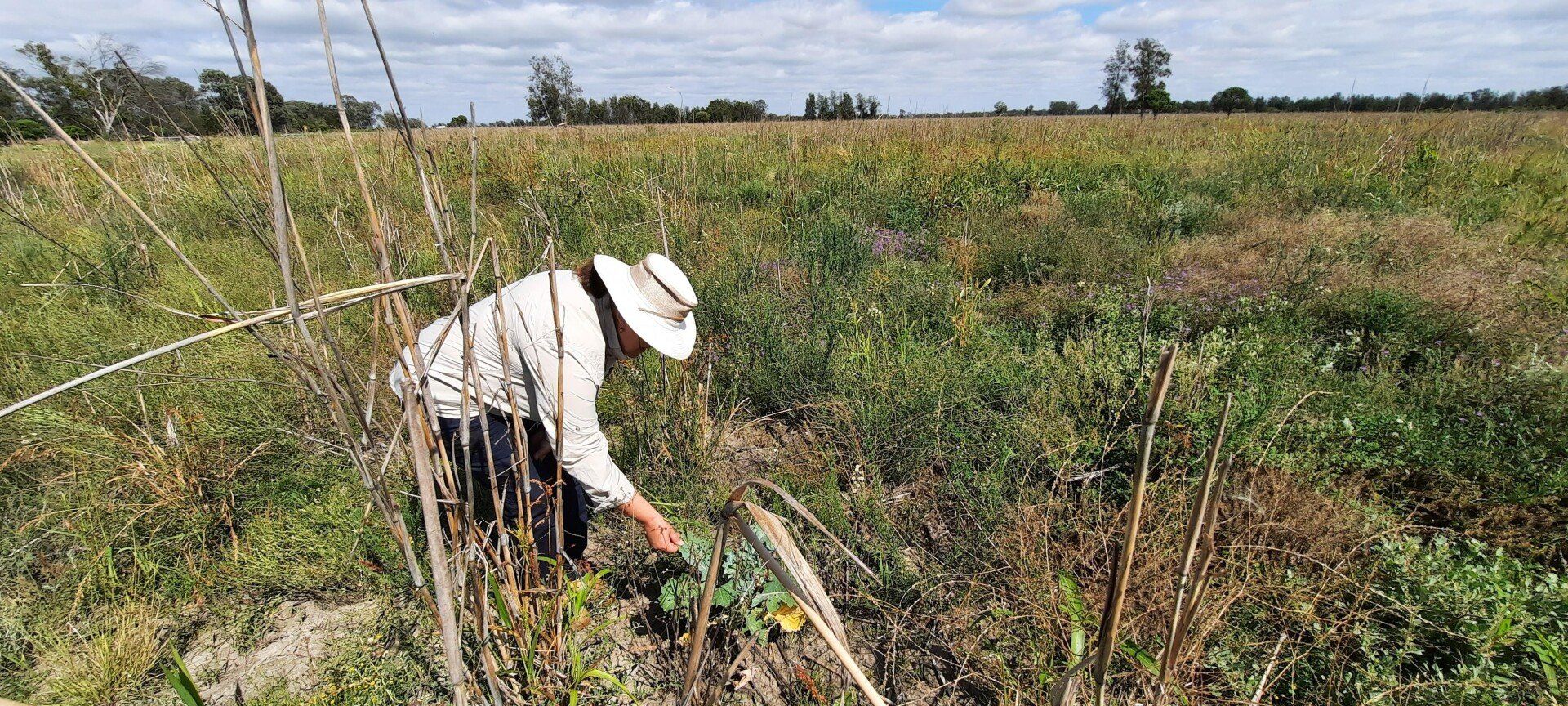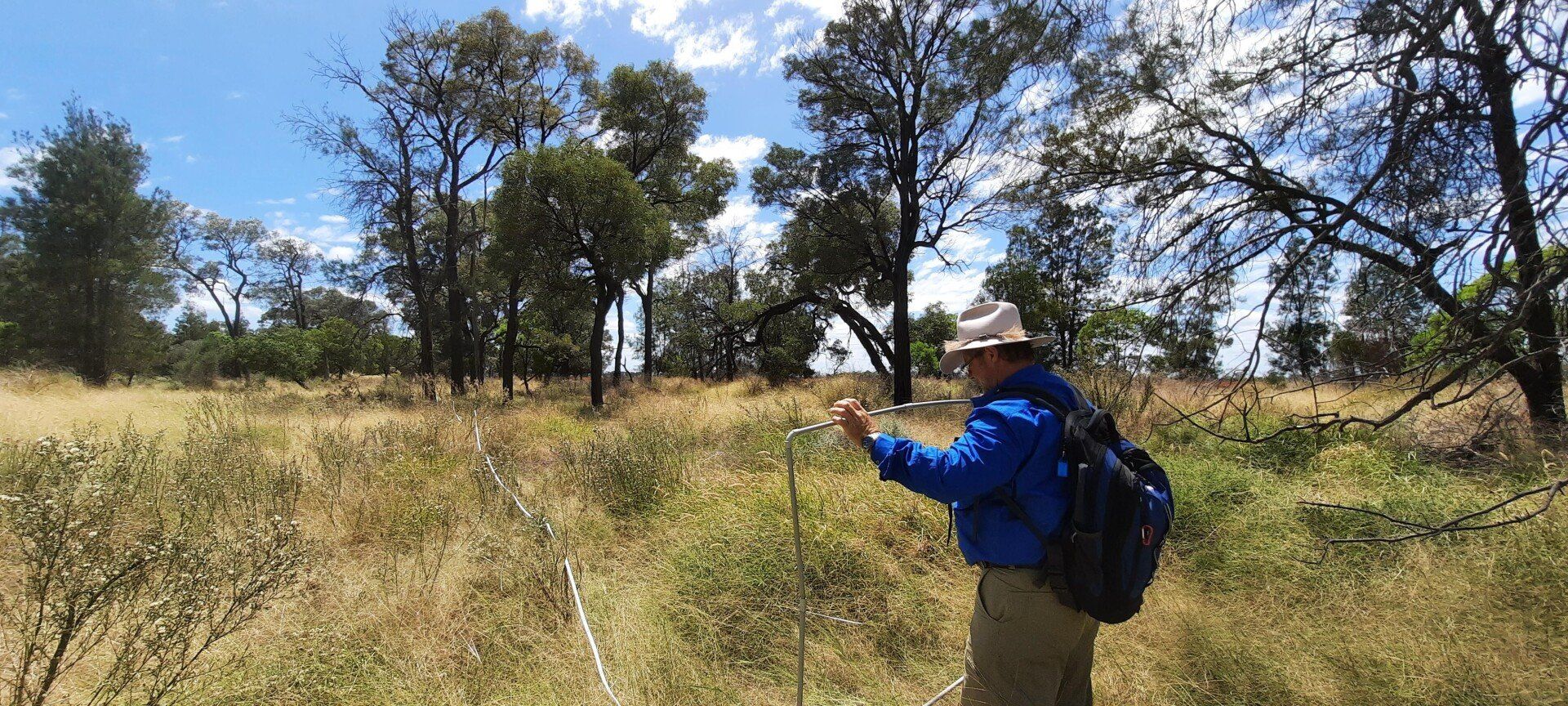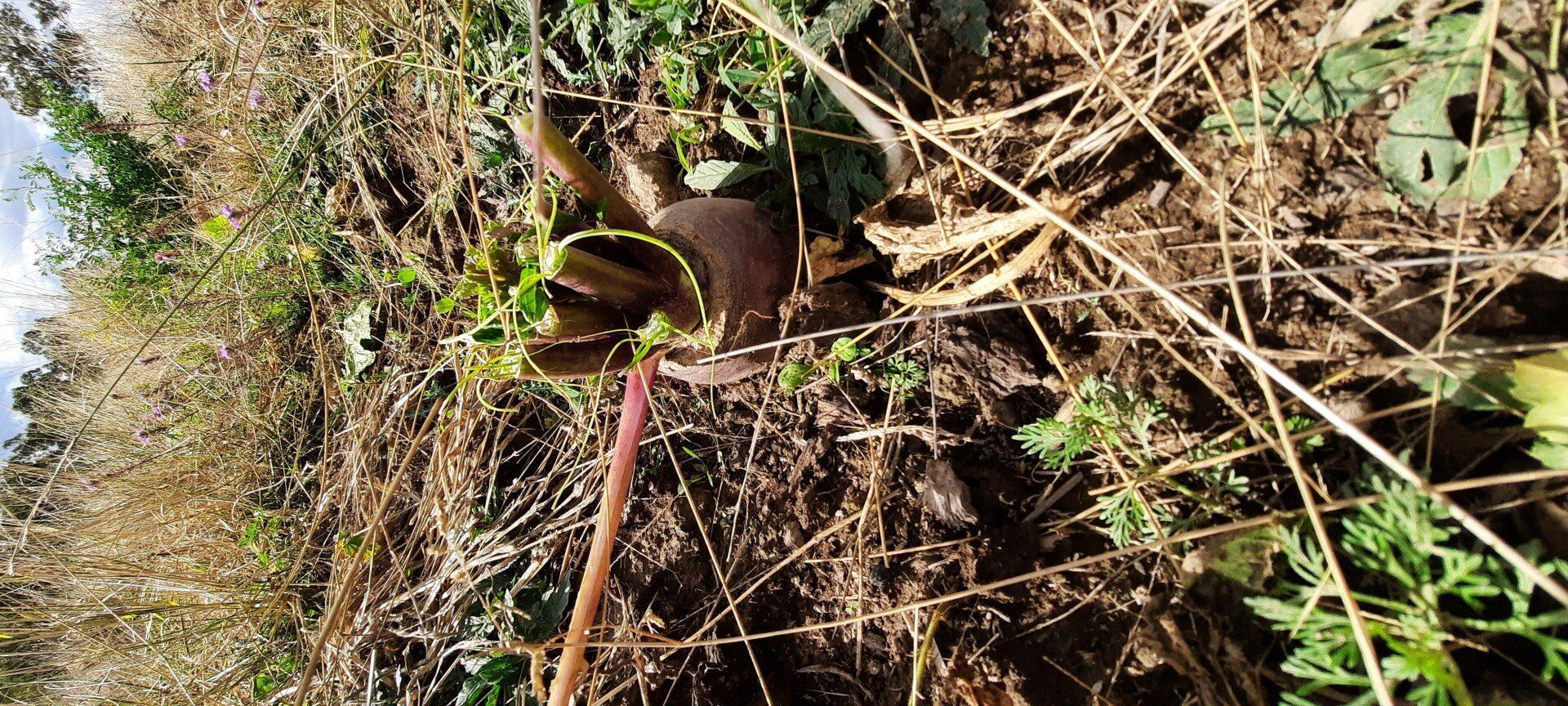Regional Land Partnerships - Environment Project
Regional Land Partnerships - Environment Project is a $5.3 million dollar investment from the Australian Government through the National Landcare Program focused on improving three ecosystems in Southern Queensland including Brigalow and Weeping Myall remnants in the Murray-Darling Basin, Natural Grasslands and Poplar Box Grassy Woodlands of the Darling Downs and the Currawinya Ramsar Wetlands of south-west Queensland.
What Have We Achieved To Date?
Through the Regional Land Partnerships - Environment Project, 33 field days have been held, attracting some 568 participants; 50 of whom identified as First Peoples. Fifty-one people also took part in on-ground works through the project which included 28,159 hectares of weed reduction and 178,980 hectares of pest control and a further 93,686 hectares of practice change.
Latest Project News
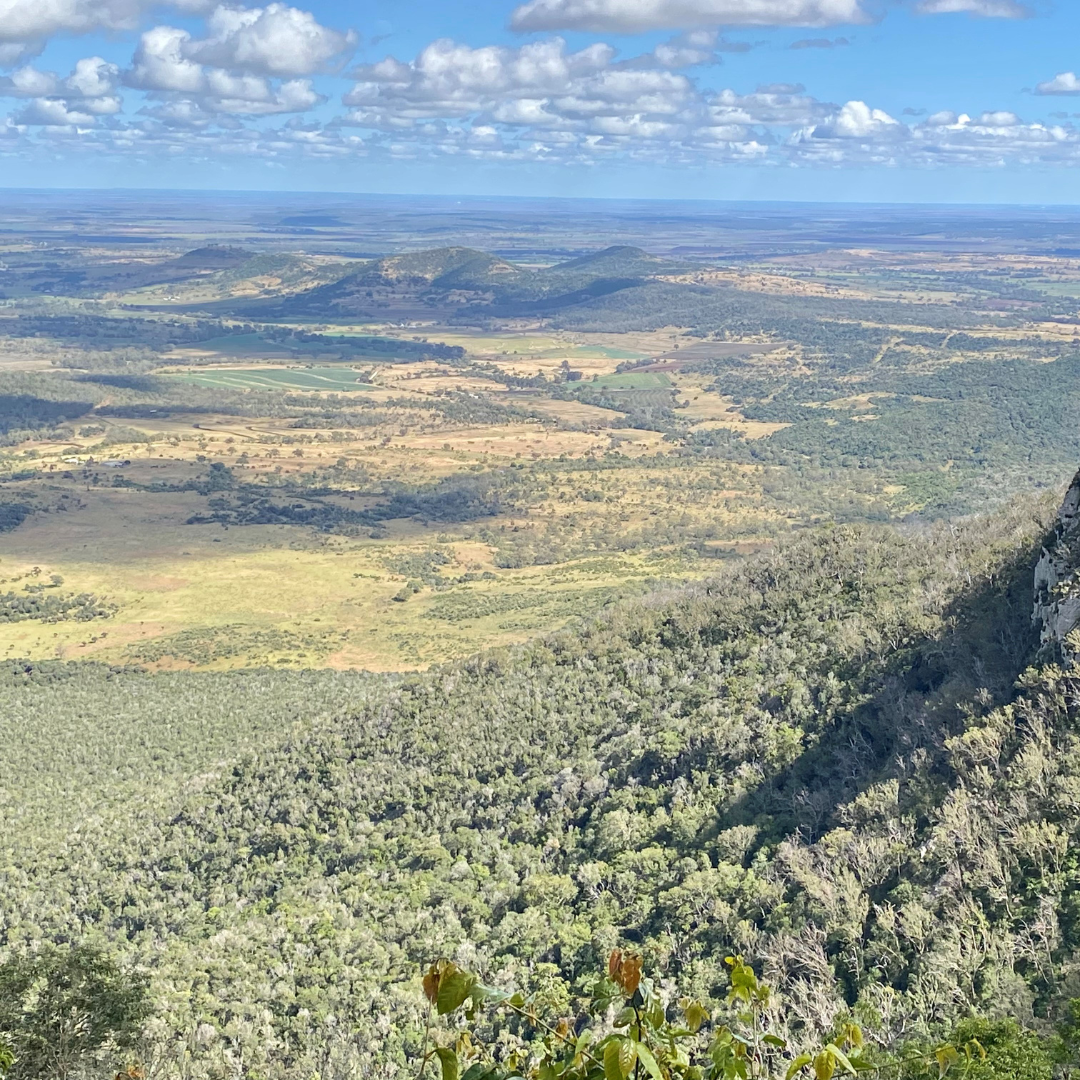
Brigalow belt poised to bounce back thanks to plan
One of Australia’s most significantly diverse ecosystems is set to make a comeback after the Threatened Species Commissioner visited the Brigalow Belt west of Toowoomba.
Dr Fiona Fraser was touring Brigalow country to work with existing partners on the implementation of the Threatened Species Action Plan.
The once dominant brigalow forest now only covers five percent of its original land area extending from Townsville to central NSW; eight species traditionally found in the belt are now extinct and a total of 147 species and 100 ecological communities are listed as threatened.
Natural Resource Management group Southern Queensland Landscapes facilitated the tour following the release of the plan in October by Minister for the Environment and Water, Tanya Plibersek.

Threatened Species Action Plan
On 4 October 2022, Minister for the Environment and Water Tanya Plibersek released the Threatened Species Action Plan: Towards Zero Extinctions.
The Threatened Species Action Plan maps a pathway to recovery for our nation's threatened wildlife, spanning terrestrial, marine and freshwater environments. It presents a vision to drive practical on-ground efforts and identifies critical action for the recovery of threatened species and ecologial communities guided by experts and the Australian public.
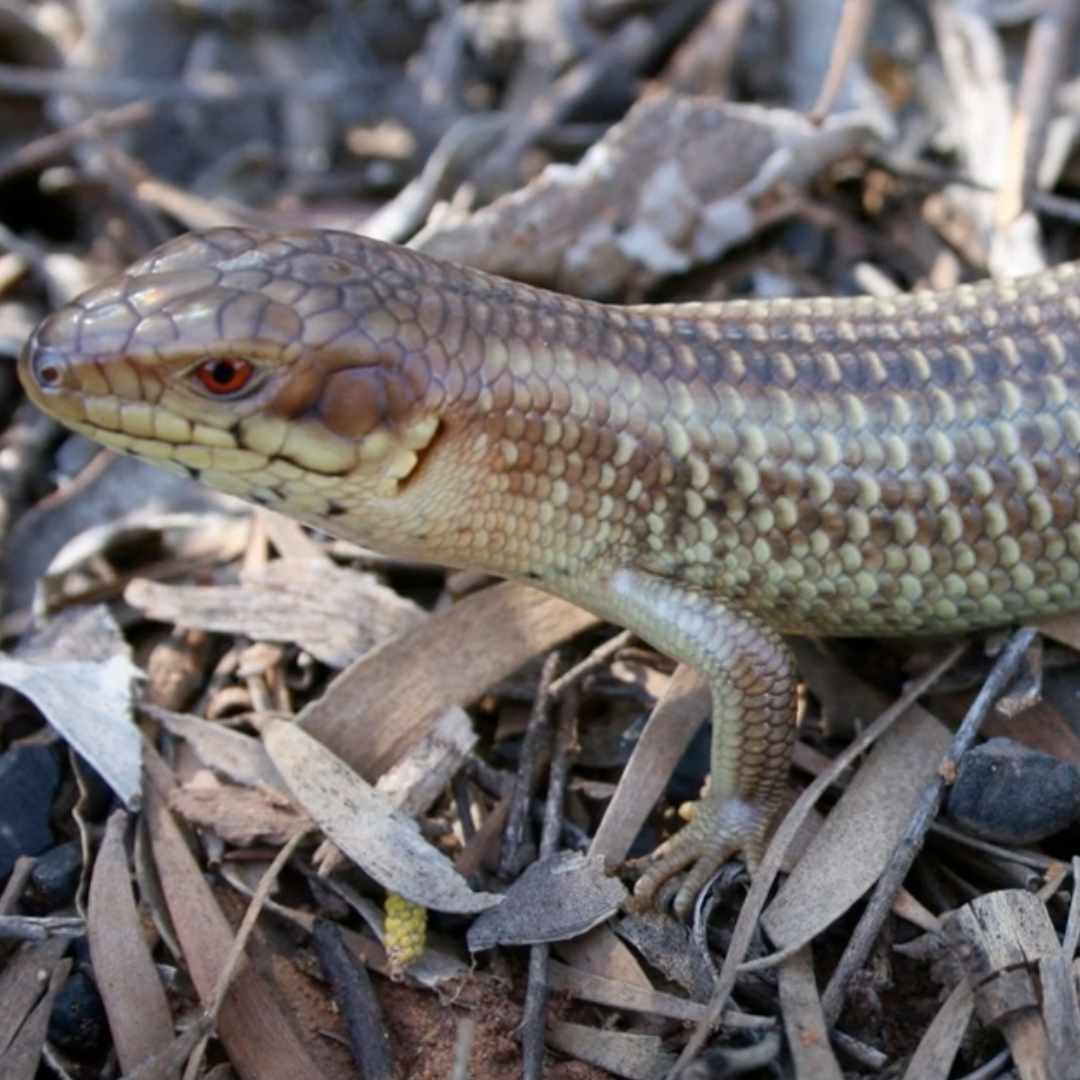
Protecting Yakka Skink
The Yakka Skink (Egernia rugosa) is native to the Brigalow Belt in Queensland. It is an omnivore, whose diet includes spiders, grasshoppers and beetles. It is at risk from loss of habitat. This project aims to maintain and enhance the Yakka Skink's habitat in the Murray-Darling Basin in Queensland.
(Image by Steve Peck)

Brigalow & Weeping Myall remnants in the Murray-Darling Basin
Brigalow is a species of silvery wattle that creates the open forests and woodland communities known as the Brigalow Belt. SQ Landscapes' region includes the Southern Brigalow Belt which is a highly fragmented landscape supporting numerous rare and threatened flora and fauna species: particularly reptiles such as the Yakka skink (Egernia rugosa) and Woma python (Aspidites ramsayi).
Through $1.8 million of funding from the Australian Government's National Landcare Program SQ Landscapes aims to assist land managers to improve the health of the Brigalow TEC (Threatened Ecological Community) by reducing threats from bush fire, invasive weed species, feral animals, overgrazing, soil erosion and salinity, and clearing.
Of the animal species that formerly occupied the Brigalow Belt, several are now extinct including the Paradise parrot (Psephotellus pulcherrimus) and Darling Downs hopping-mouse (Notomys mordax).
Bush fire
Bush fire poses a significant risk to Brigalow country and the species that it supports.
Invasive weed species
Invasive weeds compete for water and nutrient resources often outcompeting native flora.
Feral animals
Pigs, foxes, rabbits, cats and wild dogs compete for food sources with native animals and contribute to the spread of pests and diseases in Brigalow country.
Overgrazing
Overgrazing can put undue stress on the sensitive Brigalow ecosystem and contribute to weed set and infestations.
Soil erosion & salinity
Brigalow country is known for its high inherent salt loads and highly erodible soils which are prone to erosion and salinity.
Habitat fragmentation
Clearing of Brigalow country contributes to reduced agricultural productivity, rising soil salinity, declining livestock weights and leaching of the root zone.
Protecting Yakka skink in the Murray-Darling Basin
Through the Regional Land Partnerships - Environment Project, Southern Queensland Landscapes has been working with land managers throughout Southern Queensland to protect Brigalow remnants for fauna including the Yakka skink.
The Yakka skink (Egernia rugosa) is native to the Brigalow Belt in Queenlsand but it is at risk from loss of habitat owing to impacts from feral animals, weeds and threatening land management processes. The Yakka skink is large and secretive and as an omnivore feeds on a diet of spiders, grasshoppers and beetles.
Watch the video to learn more.
Currawinya Ramsar Wetlands
The Currawinya Lakes Ramsar site, located within Currawinya National Park in south-west Queensland is one of the Australia’s most important inland wetlands and is recognised internationally.
The wetlands include Lake Numalla (freshwater) and Lake Wyara (saltwater), clay pans, swamps, smaller lakes, springs and the waterholes of Paroo River. These wetland systems provide habitat and sanctuary for a spectacular array of waterbirds including waders and shorebirds migrating through inland Australia. Each lake supports a distinct community of waterbirds due to different water conditions.
$2.1 million dollars is being invested in the maintenance and protection of the Currawinya Ramsar Wetlands through the National Landcare Program’s Regional Land Partnerships.
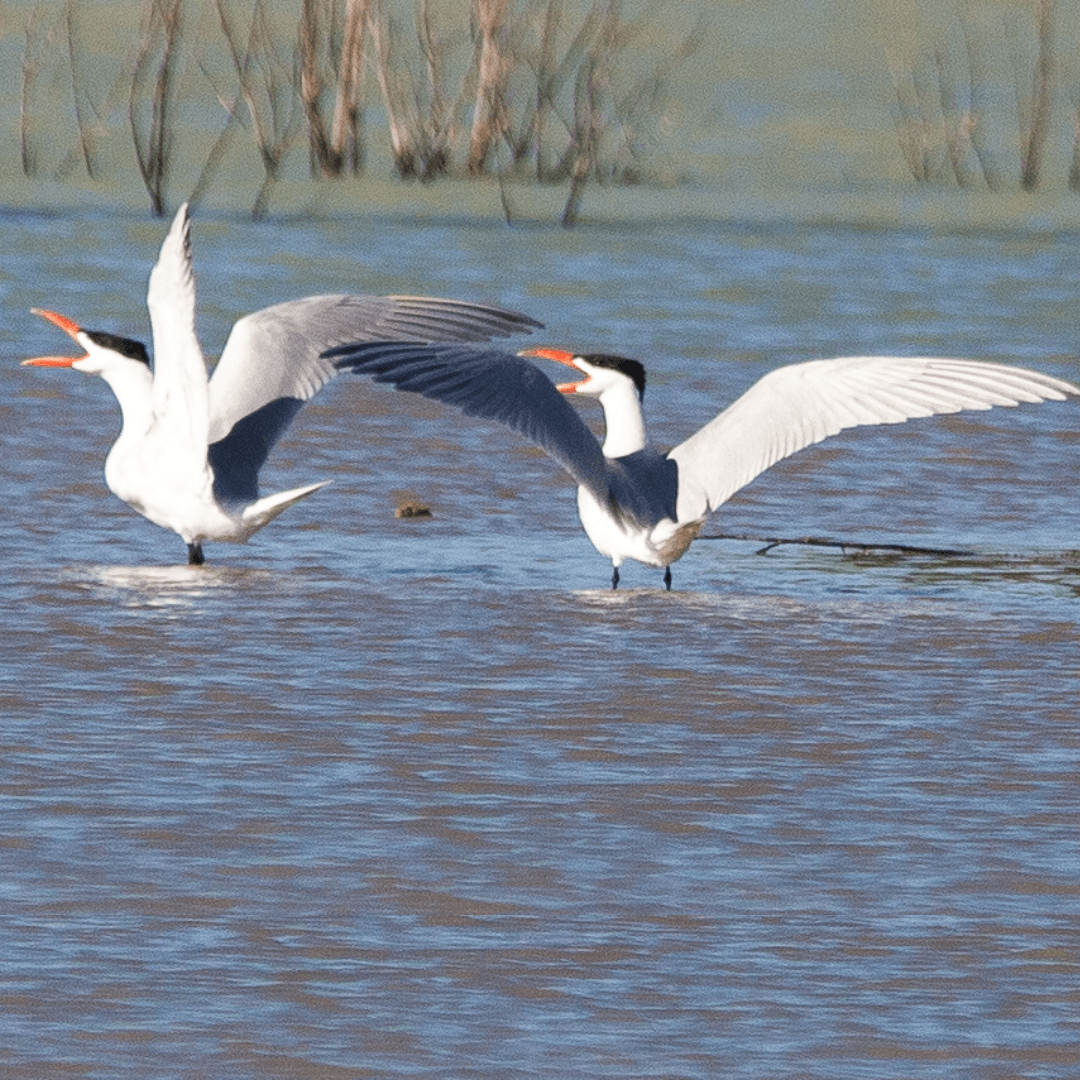
Changes in water quality
Lakes Numalla and Wyara are some of inland Australia's most important wetlands supporting thousands of waterbirds from 41 different species.
Erosion
With high volumes of water running through the system erosion can threaten the watercourses.
Ground cover
Ground cover is hugely important in slowing the flow of water through the system and reducing erosion risk.
Invasive weeds
Invasive weeds pose a significant threat to the wetlands
Feral animals
Regular feral animal control is applied to the wetlands in a bid to reduce impact to the sensitive ecosystem and the fauna it supports.
Waterbird predation
Feral animals can have significant impact on waterbird populations, particularly at nesting time.
More Project News
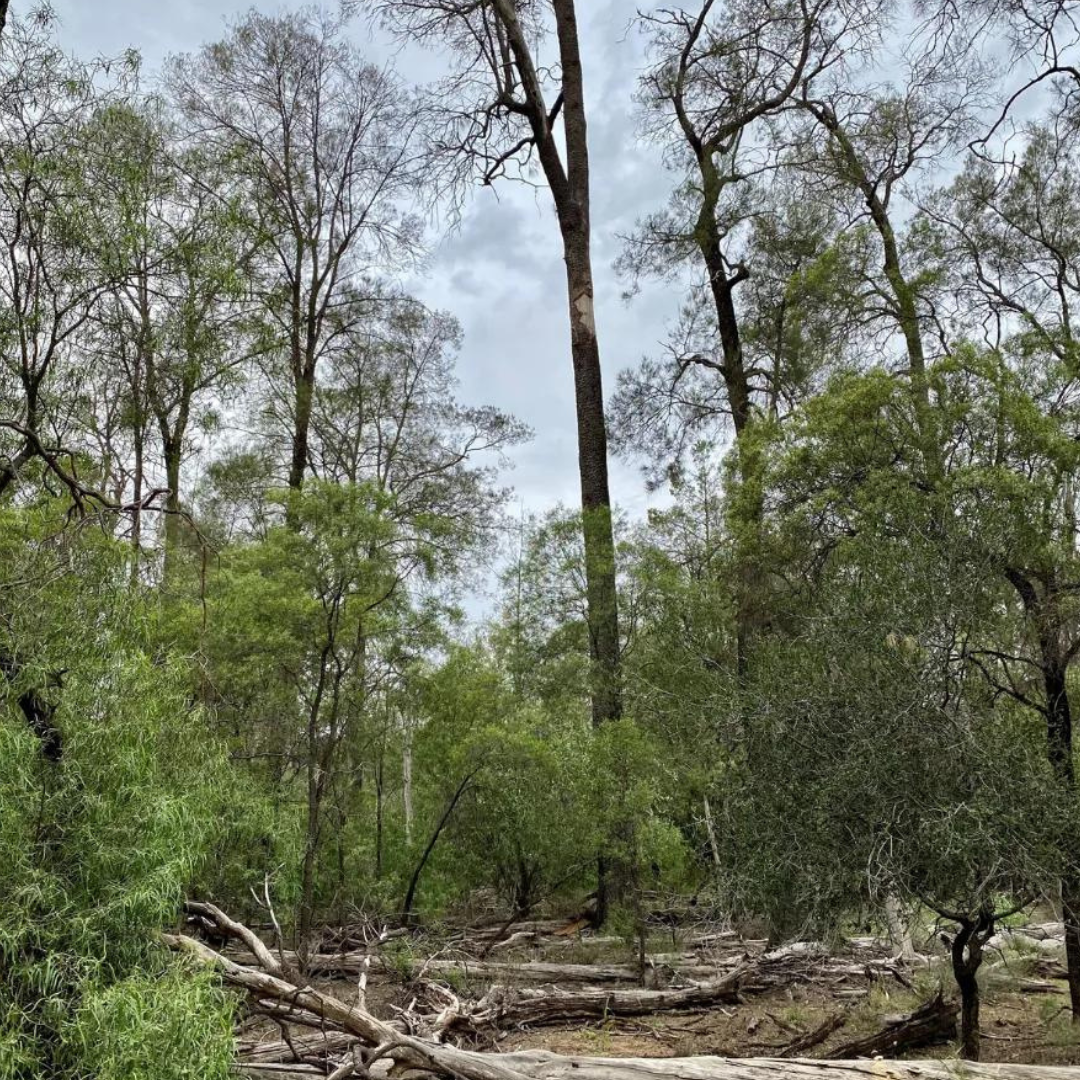
Brigalow Fauna Survey: Moonie, Qld
We have been busy using science to explore Brigalow remnants in our region to gather baseline data about biodiversity, vegetation types and overall ecosystem health, specifically in the Moonie area.
Brigalow (Acacia harpophylla) is a species of silvery wattle that creates open forest and woodland communities known as the Brigalow Belt. Belah, Gidgee, Lancewood and Bendee trees grow alongside Brigalow as part of these forests and woodlands.
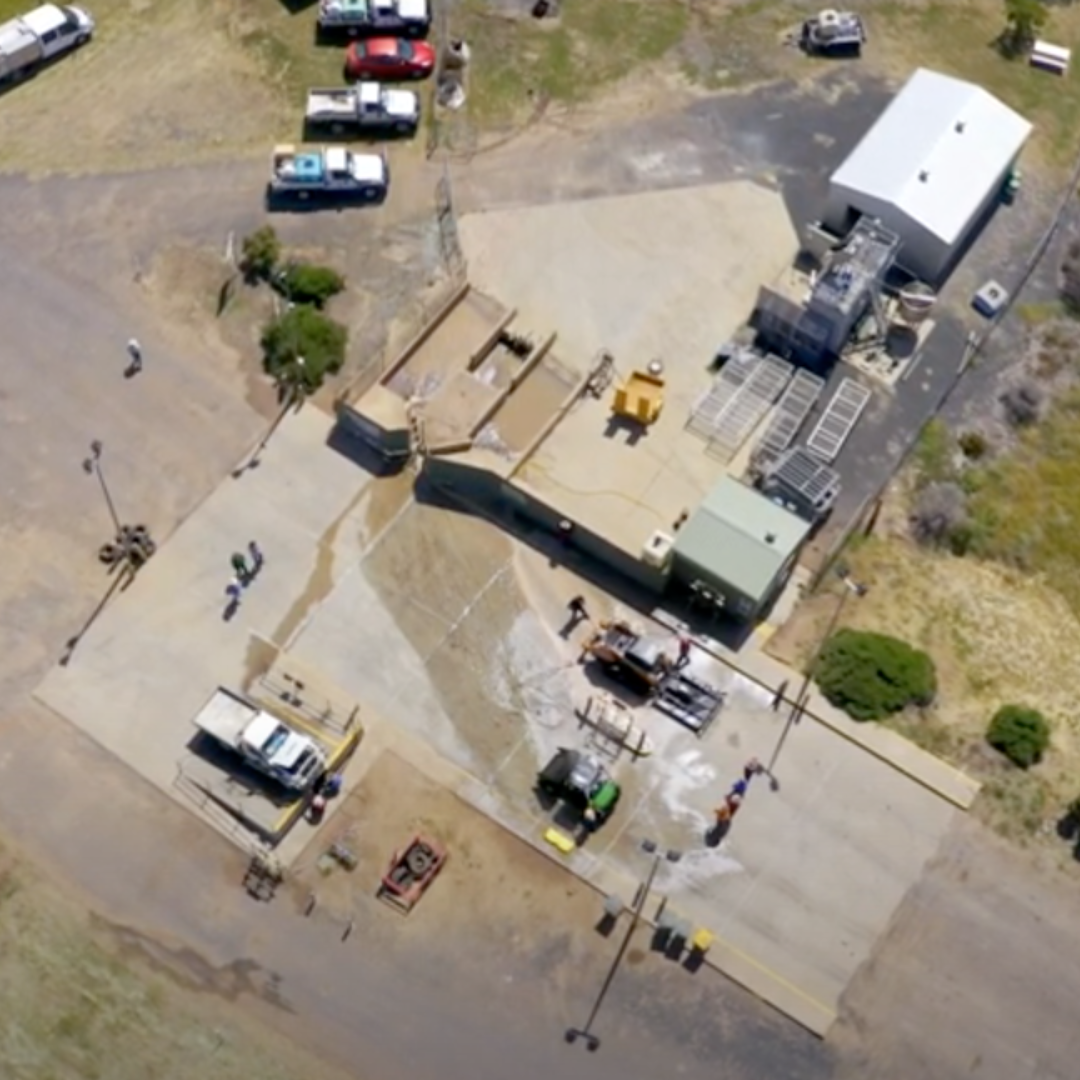
Preventing weed spread through vehicle wash-down
Southern Queensland Landscapes joins Western Downs Regional Council and Weed Society of Queensland members to display evidence-based vehicle wash-down techniques for preventing weed spread.
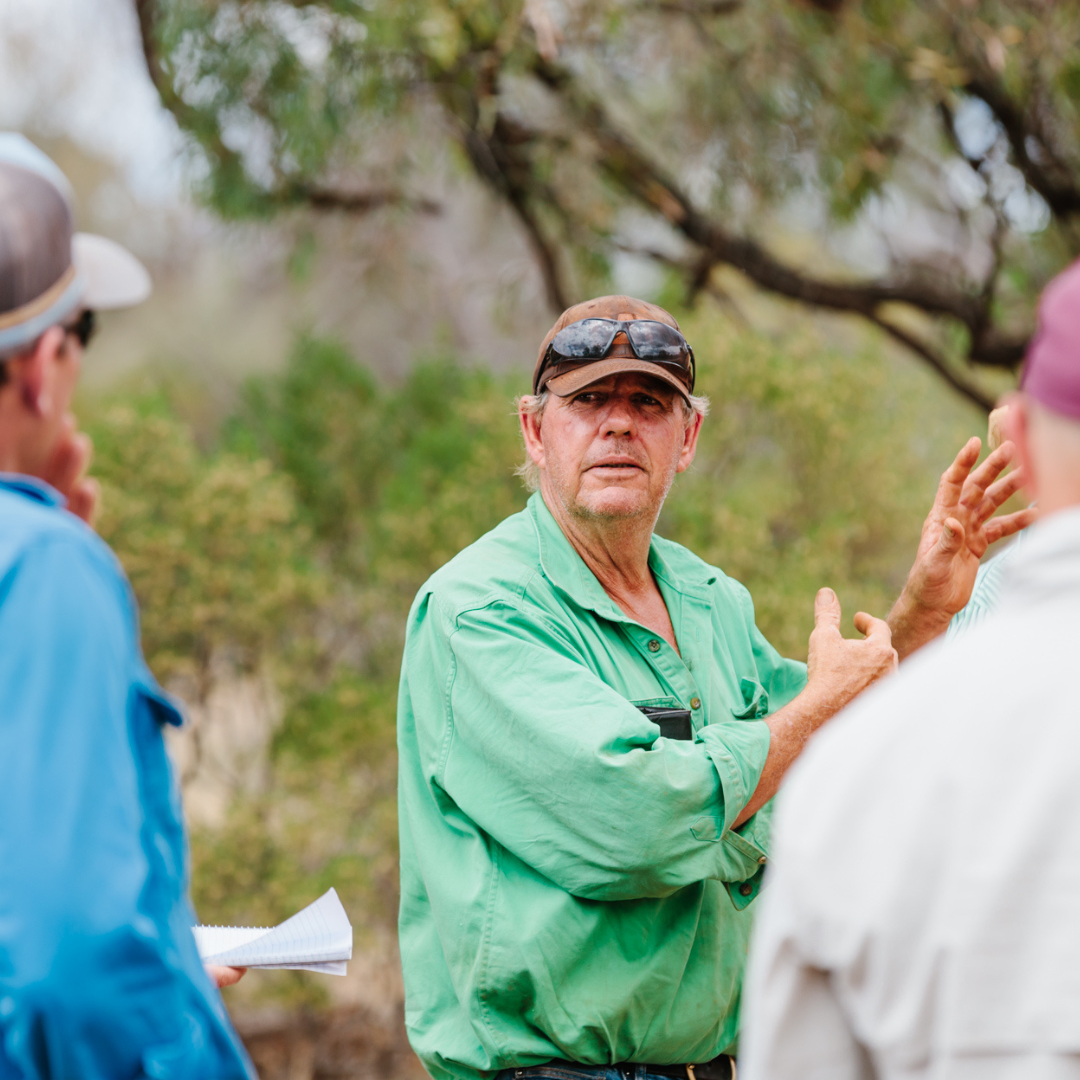
Addressing Water Retention Issues
Watch how Eulo land manager David Meurant is transforming his sheep and cattle station, 'Wandilla Station' on the Paroo River with help from Southern Queensland Landscapes.
David's 45,000 acre property has water retention problems due to erosion and old bore drains channelling rain water off the landscape too quickly, causing soil loss and erosion damage.
It also aims to reduce sediment entering the Paroo River which feeds into the vital Currawinya Ramsar Wetlands downstream.
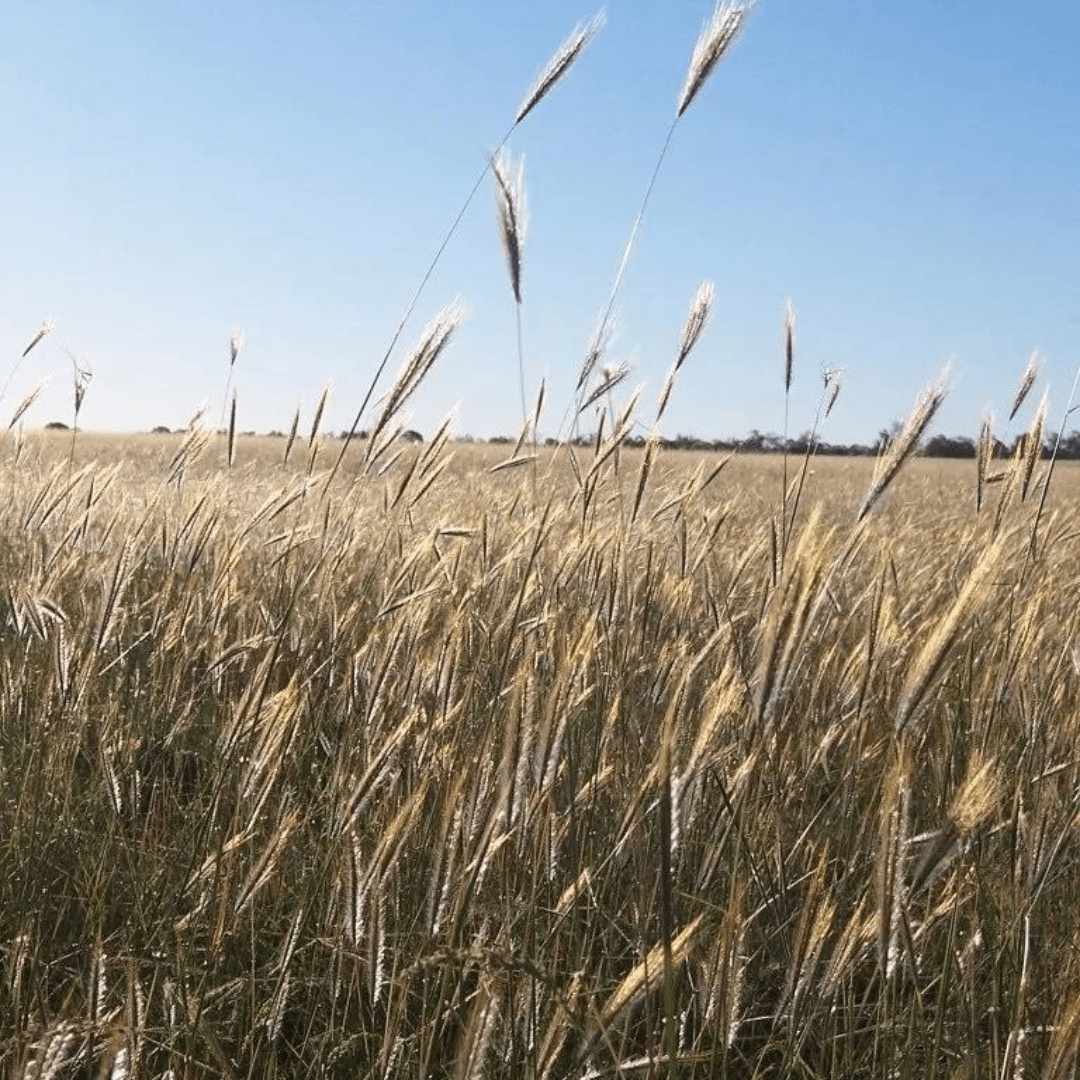
Natural Grasslands & Poplar Box Grassy Woodlands of the Darling Downs
Treeless grasslands dominated by Queensland bluegrass (Dicanthium sericeum) were once the most common vegetation type across the Darling Downs. Now, the grasslands have been reduced to approximately one percent of their former area.
Without a shrub and tree canopy layer, structural diversity in this ecological community is found in the well developed grass tussocks and inter-tussock spaces as well as in the forbs, twining herbs and decaying vegetation. The deep soil cracks are also important habitats for many native species.
Natural Grasslands & Poplar Box Grassy Woodlands on the Darling Downs provide habitat for a number of threatened flora and fauna species including Koala (Phascolarctos cinereus), Austral cornflower
(Rhaponticum australe), King bluegrass
(Dichanthium queenslandicum), the Condamine earless dragon
(Tympanocryptis condaminensis) and grey snake
(Hemiaspis damelii).
The health of our grasslands and the species they support are under threat from weed invasion, feral animals, overgrazing and conversion of native pastures to improved species and cropping. SQ Landscapes are working across priority areas in our region to assist land managers with maintaining these grasslands remnants with an investment of $1.4 million dollars until 2023 from the National Landcare Program’s Regional Land Partnerships.
Poplar Box Grassy Woodland ecosystem & dominant grasslands of the Darling Downs
Join SQ Landscapes Project Officer Isabella Murphy and University of Queensland Researcher Dr Jennifer Silcock as they take you on a tour of the Poplar Box Grassy Woodland ecosystem and dominant grasslands of the Darling Downs.
You will discover Australia's only native thistle (Rhaponticum australe), learn how to identify Queensland bluegrass (Dicanthium sericeum), marvel at the Poplar box (Eucalyptus populnea), and uncover the production value of Tall Oats Grass (Themeda avenacea).
How to prevent weed spread with a thorough vehicle wash down
Join Environmental Consultant Lisel Dingley from Dynamic Environmental as she explores reducing biosecurity risks on your property with thorough vehicle wash down techniques.
As Lisel explains in the video prevention is better than a cure; so one hour of washing down your vehicle today can save you years of weed control in the future.
Bush fire
Bush fires burn hot and can have a negative impact on germination rates of native grass seeds.
Invasive Weed Species
Invasive weed species can outperform native grasses and reduce biodiversity.
Feral animals
Feral animals compete for food and water resources and add pressure to the sustainability of native populations.
Overgrazing
Overgrazing puts significant pressure on native vegetation giving weed species an opportunity to establish dominance.
Soil erosion
Overgrazing and clearing can leave soils unprotected and at risk of soil erosion.
Improved species & cropping
Improved species and cropping reduces biodiversity and natural habitat of native species.
Using fire in the landscape with Victor Steffensen at Jimbour Station
In March 2020, SQ Landscapes hosted a series of fire workshops with Victor Steffensen which attracted over 250 people across five locations in Southern Queensland including Mitchell, Miles, Millmerran, Jimbour and Irongate.
At Jimbour Station,where this video was filmed, the focus was on using fire to heal Natural Grasslands.
Victor is an Aboriginal filmmaker, facilitator and fire practitioner. He works with communities and particularly young people to help protect cultural knowledge and heal the landscape through fire practice and understanding the relationships between ecosystems, the land and the people.
Meet the Project Coordinators
Project Delivery Lead Christine Crafter
Chris brings more than 35 years of experience in conservation and land management to the team.
With a strong background in managing natural resources and addressing threats to biodiversity and production values, much of it in western Queensland, Chris enjoys sharing her experiences with land managers and helping them realise goals in their enterprise.
When she's not at work she's exploring the local area or absorbed in her workshop projects.
Project Delivery Lead Natasha Mylonas
Natasha is a proud environmentalist and passionate about sustainable practices both in the home and the landscape.
Natasha is a logical thinker and solutions focussed, applying her extensive knowledge of Natural Systems and Wildlife to the many projects she oversees and manages.
More Project News
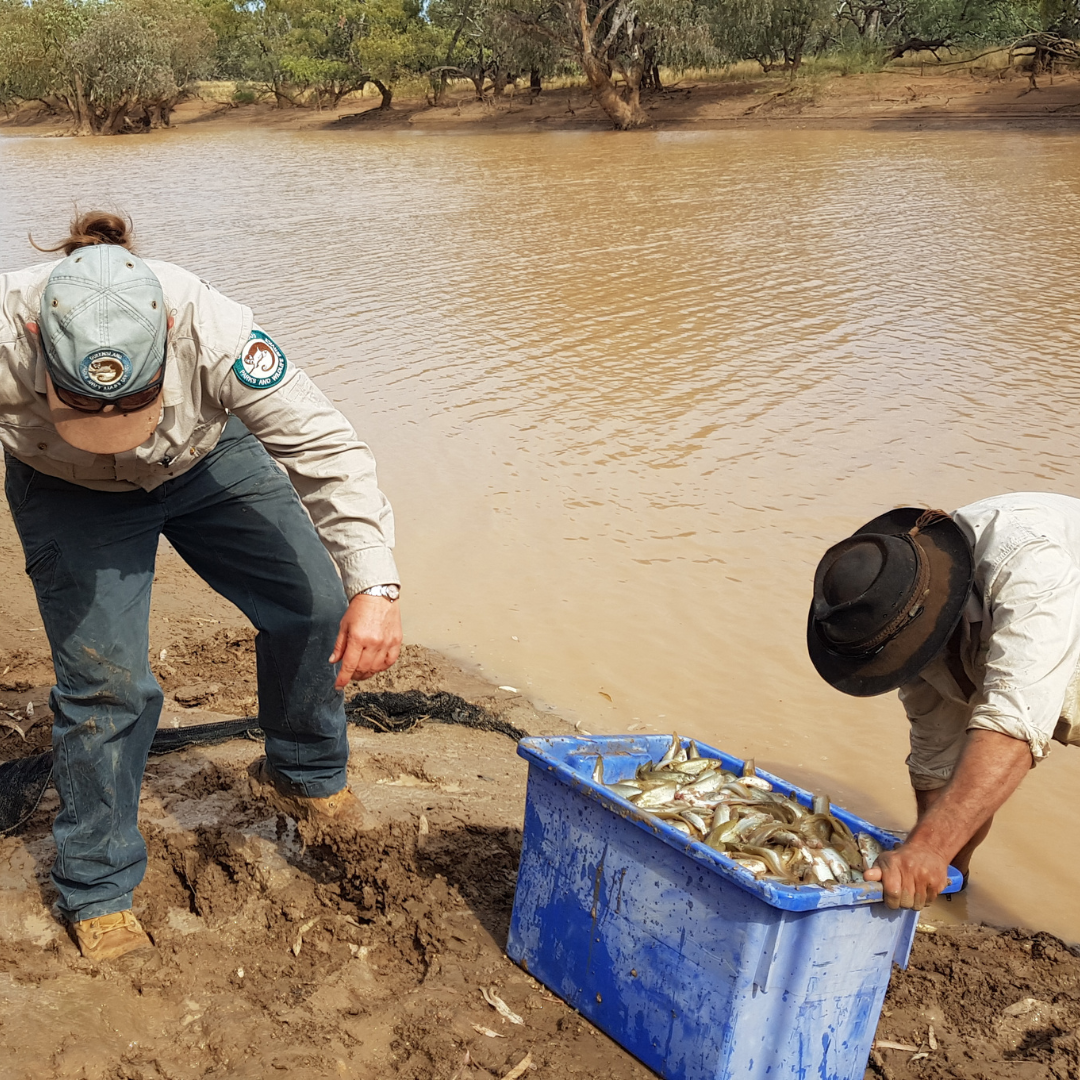
Carp numbers down in western Murray-Darling Basin
One of the world’s most invasive fish species is in decline in the internationally acclaimed Ramsar listed wetlands of Currawinya National Park in south west Queensland.
Southern Queensland Landscapes, Queensland Parks and Wildlife Service (QPWS) and renowned aquatic scientist Dr Adam Kerezsy have been surveying the health of the park as part of the most comprehensive study undertaken in the catchment.
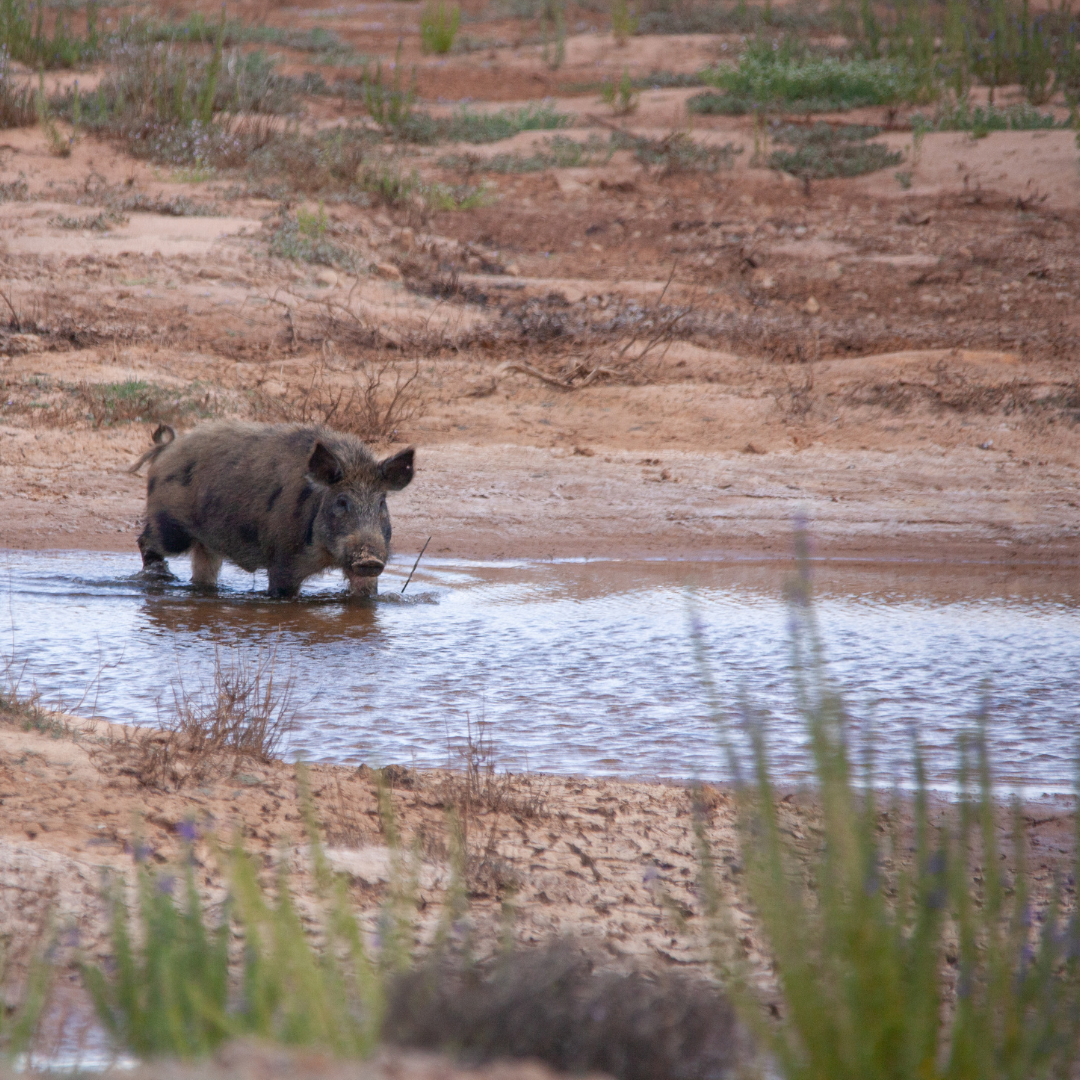
Successful pig shoot buoys western graziers
Graziers surrounding Currawinya National Park in western Queensland are set to maximise production this season following a successful aerial shoot which saw more than 600 pigs eradicated from the landscape.
The campaign was a joint initiative of Southern Queensland Landscapes, through funding from the Australian Government’s National Landcare Program, private properties surrounding Currawinya and Queensland Parks & Wildlife Services (QPWS).
SQ Landscapes Senior Project Officer Christine Crafter said the eradication program took in more than 450-thousand hectares.
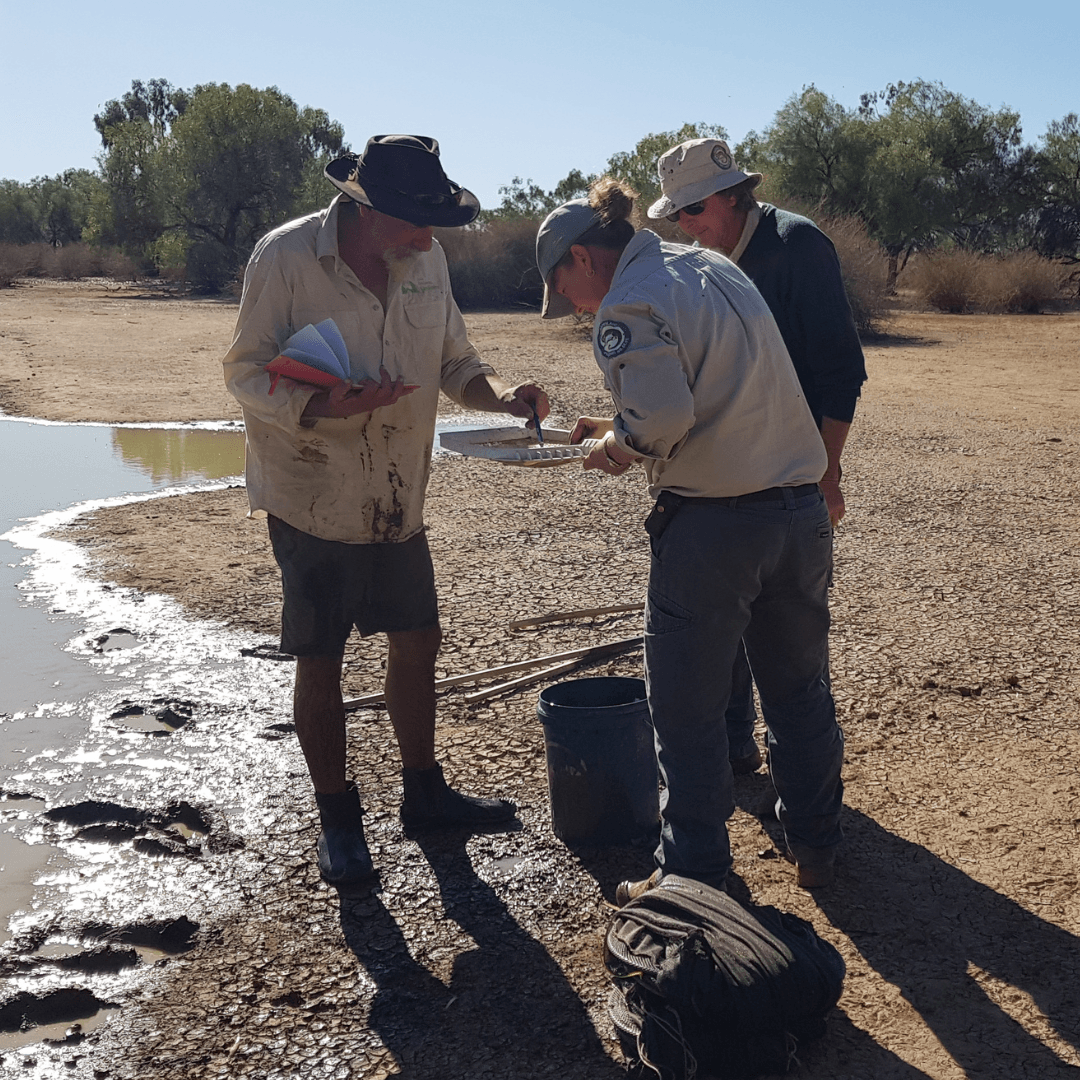
Having a splash taking stock of the waters
Late last year, in partnership with Queensland Parks And Wildlife Service rangers, our team conducted fish surveys in the lower Paroo catchment and parts of Currawinya National Park.
The surveys follow on from previous activities and aim to assess the presence and relative amounts of alien fish in the system, as-well-as the return of native fish to the long droughted creeks, waterholes and lakes.
Stay in the Loop with our Environment Projects by:
Be notified of further support opportunities, request a free property map, gain access to technical advice sessions with experts, be invited to networking events, and vote on decisions that affect our organisation.
Click here to become a member.
Our monthly e-newsletter contains details of land management events happening in the region, includes funding opportunities, tells stories from our region and provides updates on the NRM industry in Queensland.
Click here to subscribe to our newsletter.
COLLECTING A FREE WEEDS OF SOUTHERN QUEENSLAND BOOK
Being vigilant when it comes to weeds is important for the health of your land. You can collect a free copy of the Weed Society of Queensland's Weeds of Southern Queensland from our Toowoomba office during office hours.
We host events for land managers to be connected with information and resources in the fields of land care, soil health, weed control and more! We also post events from other land care and NRM organisations in southern Queensland.
Click here to visit our events calendar.
DOWNLOADING OUR FREE INFORMATION SHEETS
Want to learn more about weeds, soil conservation, vegetation, water conservation, pests and biodiversity? Visit our Knowledge & Services page and click on any of the buttons to learn more and download free printable information sheets.
Click here to discover and download free information sheets.
This project is supported by Southern Queensland Landscapes through funding from the Australian Government’s National Landcare Program.

CONTACT
ADDRESS:
Toowoomba - 266 Margaret St. QLD 4350.
Roma - 21 Major St. QLD 4455.
Charleville - 92 Alfred Street. QLD 4470.
St George - 1/11 Grey Street. QLD 4487
CONNECT
LOCATIONS
- 266 Margaret St, Toowoomba City QLD 4350, Australia 266 Margaret St, Toowoomba City QLD 4350, Australia
- 21A Major St, Roma QLD 4455, Australia 21A Major St, Roma QLD 4455, Australia
- Park St, Charleville QLD 4470, Australia 92 Alfred St, Charleville QLD 4470, Australia
- 48 Stockyard St. QLD 4490. Cunnamulla, 48 Stockyard St, 4490, QLD, Australia
- 1/11 Grey Street. QLD 4487 11 Grey St, St George QLD 4487, Australia
